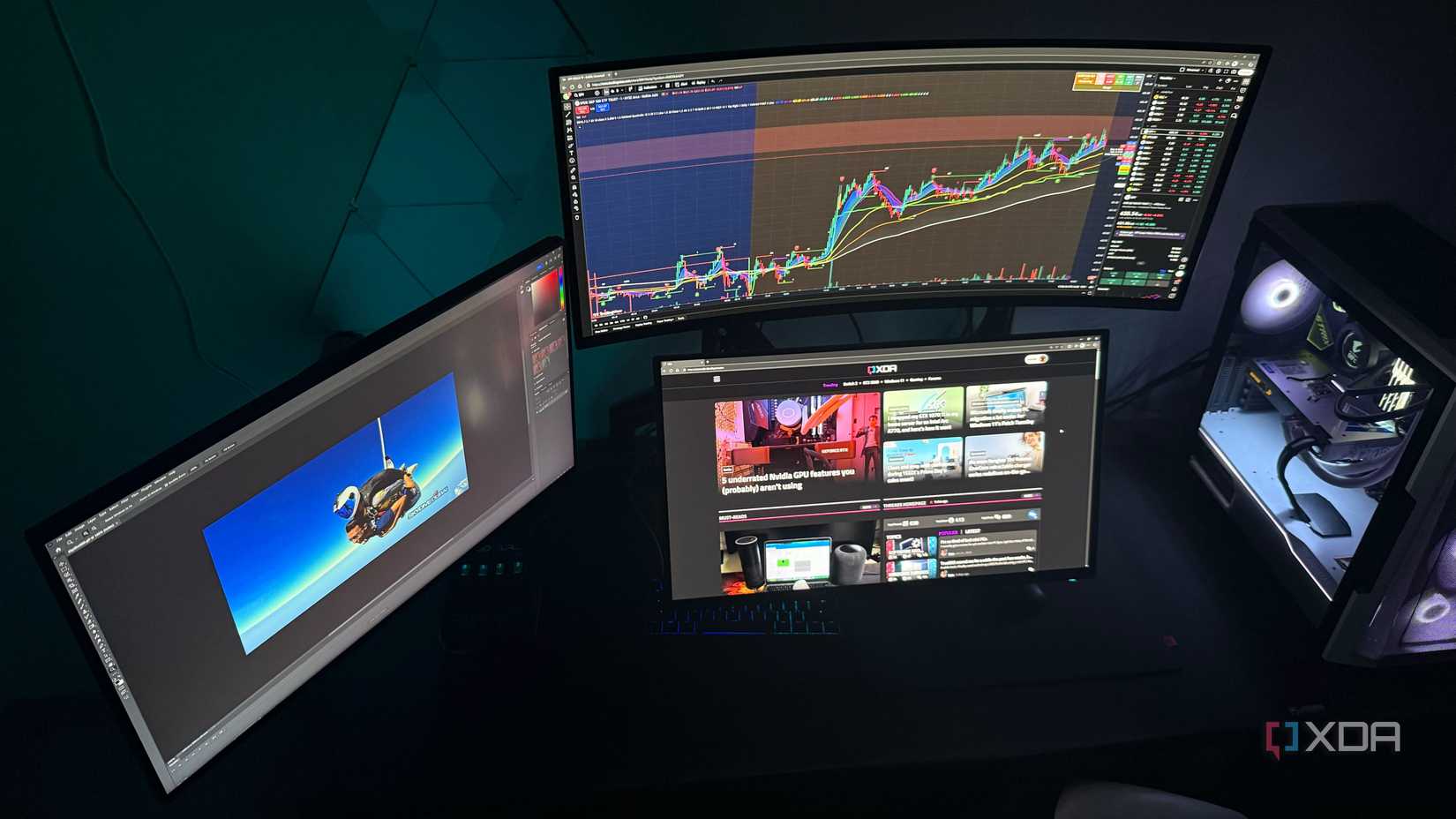When I purchased the Alienware AW3423DW a couple of years ago, I was excited to try out an OLED monitor for the first time and curious to see what its 1800R curve would add to my experience. Until then, I had always used flat LCD panels, so the thought of combining OLED's visual upgrades with a curved screen felt like the upgrade I had been waiting for. But after using it as my primary monitor for some time, I bought a faster flat OLED, the AW2725DF, in 2024.
That's when I realized how much I missed the simplicity and practicality of a flat screen. While the AW3423DW was undoubtedly impressive in many ways, its curve eventually started to feel more like a compromise than a benefit. It did help with immersion in some games, but I don't play AAA single-player titles nearly as often as I play competitive shooters or spend time working in productivity apps. Below, I'll share exactly why I now rely on a flat monitor as my primary display.
The curve only benefited some games
Immersion worked in single-player but not in competitive play
There's no doubt that the curve of the AW3423DW made certain games feel more immersive. For instance, Forza Horizon 5 looked incredible on the ultrawide panel with the screen wrapping around my vision as I raced through open roads. Likewise, open-world single-player titles like Assassin's Creed: Shadows and Red Dead Redemption 2 benefited from that sense of depth, where the curve almost made me feel like I was standing inside the game world rather than just looking at it.
However, I rarely play such AAA single-player titles to benefit from the immersion the curve offers. The vast majority of the time, I play competitive shooters like Valorant and Marvel Rivals, where speed, precision, and consistency matter far more than immersion. In these games, the curve quickly started to feel like a distraction. Enemies on the far edges of the screen didn't look the same as those in the center, and that was enough to throw my aim off during gunfights. I've found that uniformity matters more than immersion in competitive play, so the flat AW2725DF has been a better fit for me, especially with its faster 360Hz refresh rate.
Straight lines sometimes felt off in daily use
Productivity apps exposed the curve's subtle visual quirks

One of the minor issues I noticed with the AW3423DW was how certain lines and shapes appeared during everyday use. I wouldn't call it distortion, but because of the monitor's 1800R curve on an ultrawide form factor and my viewing position, some content didn’t look quite right. It stood out most when I was editing photos and videos in Photoshop and Premiere Pro, where precision is crucial. Straight lines didn't always appear perfectly straight across the entire panel, and subtle inconsistencies had me second-guessing whether I was looking at the image correctly or whether the curve was influencing my perception.
I wouldn't be surprised if most of you haven't noticed this at all, because on 16:9 monitors with a gentle curve, the effect would be far less obvious. And if you mostly use it to play games or watch movies, you may never run into it in the first place. But when accuracy matters, even these small inconsistencies can be bothersome. Fortunately, once I switched to the AW2725DF for both competitive gaming and productive work, I no longer had to worry about the curve influencing my perception at any point. That peace of mind alone made the change worthwhile.
Flat panels fit better in multi-monitor setups
Aligning your monitors is so much easier without a curve to deal with

One thing I didn't consider before getting the Alienware AW3423DW was just how awkward it would be to match a curved ultrawide with a flat secondary monitor. From the moment I installed it, I couldn't ignore how out of place my LG 27GN950 looked on the desk. The edges of the two monitors never aligned properly, and dragging windows between them felt unnatural, almost like they had to bend around a corner before straightening back out.
This is the main reason why I decided to mount the AW3423DW on top after getting the flat AW2725DF. Now that my LG monitor sits next to another flat panel, I don't have to worry about misaligned edges or unnatural flow between displays. If I need to move a window to my curved ultrawide, I just drag it up from my primary monitor, so it doesn't break the continuity of my main workspace. This separation keeps the bottom row clean and practical for everyday tasks, while the AW3423DW still gets to shine when I want to watch movies or play AAA single-player games with a controller.
Curved monitors simply aren't as versatile as flat panels
I don't necessarily regret buying the AW3423DW, because it showed me how immersive OLED gaming could be, especially on a curved ultrawide screen. That's the main reason why I still keep it around. However, when it comes to a primary display that I use every day for writing articles, editing photos/videos, and competitive gaming, a flat monitor just makes more sense. I don't need immersion for most of the things I do on my computer, but when I really want that experience for AAA single-player games, I have the AW3423DW mounted right above my flat monitors. My current setup reminds me that curved panels can be fun, but it's the flat monitors that hold everything together with their consistency and practicality in day-to-day use.
.png)











 English (US) ·
English (US) ·